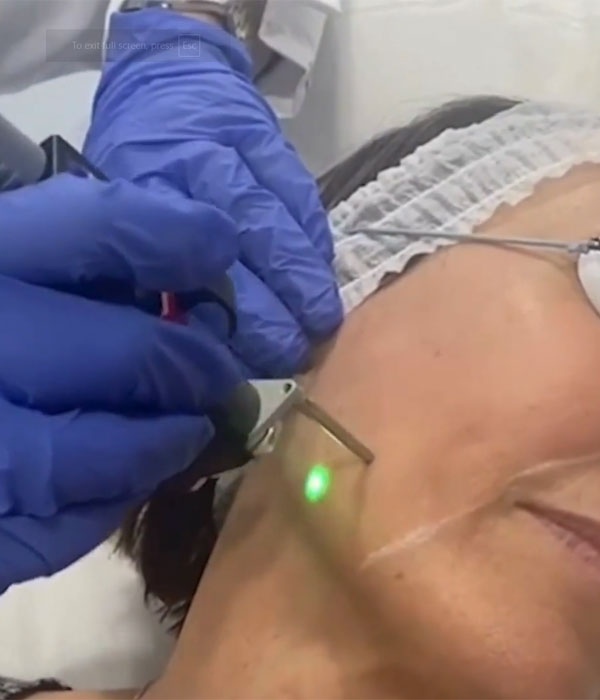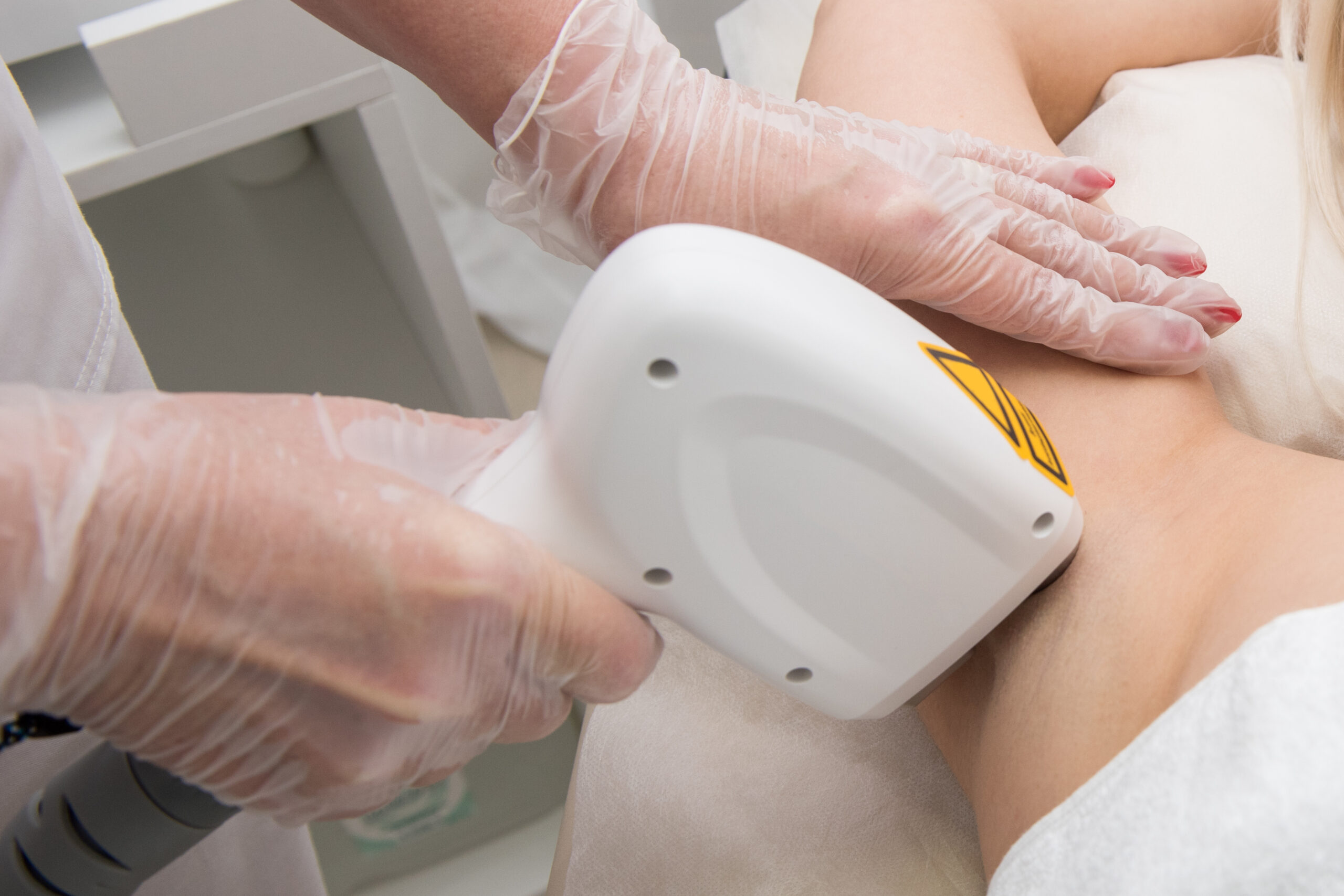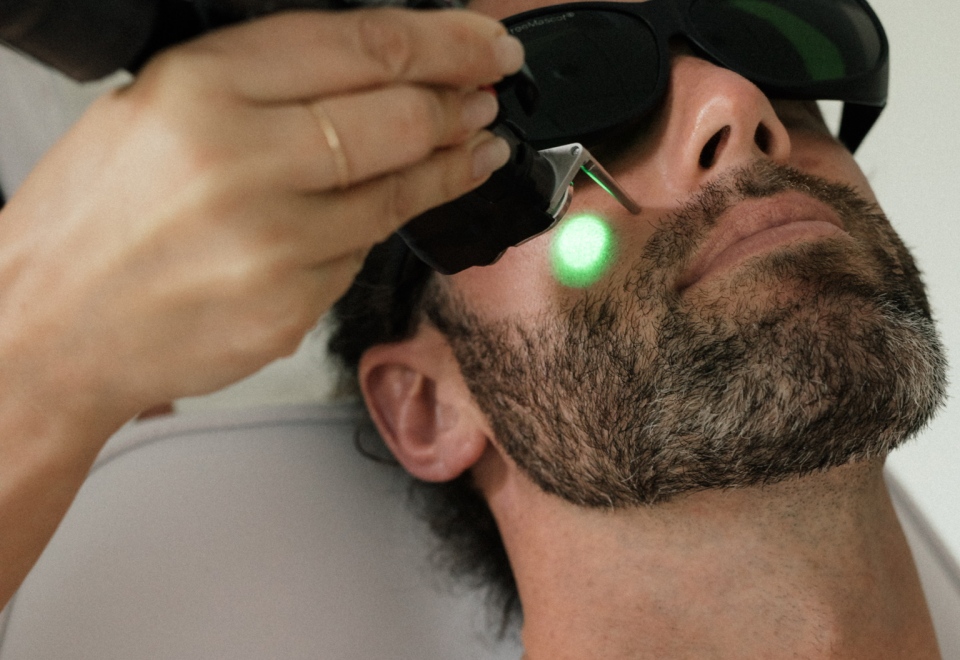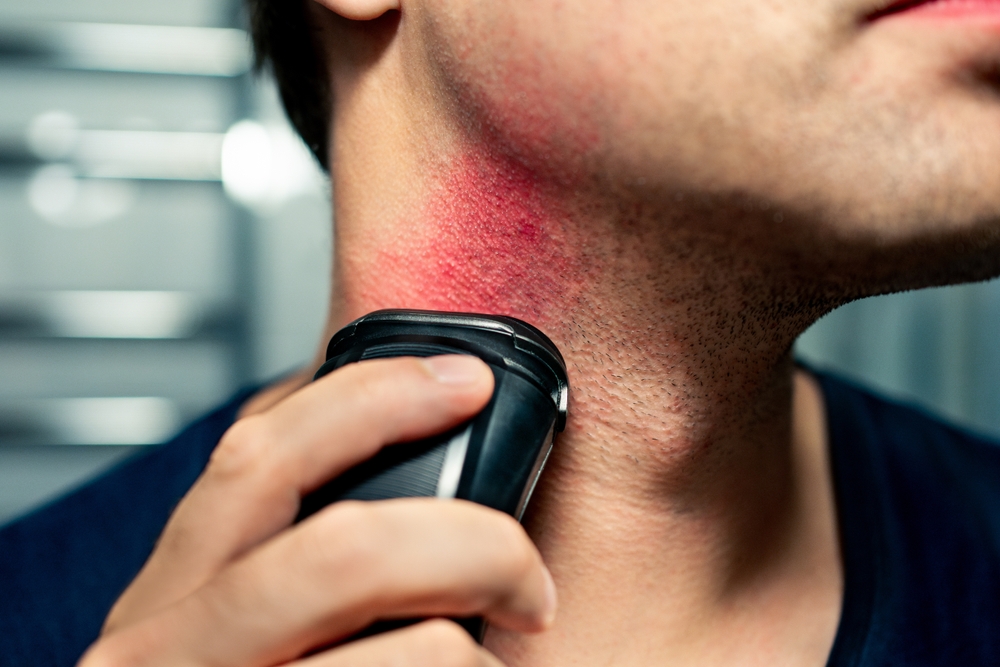Laser Hair Removal Treatment
No hair access beyond this point
No hair access beyond this point
No hair access beyond this point
Removal Laser Hair Areas
With the appropriate laser technology all skin types can be treated safely.
Multi body areas discounts are available for two or more areas
- BUY 2 different Body AREAS – GET 10 % OFF on the 3rd area
- BUY 3 different Body AREAS -GET 15% OFF on the 4th body area
Maintenance sessions are for customers who have completed 6 sessions or after the laser technician assesses the progress.
Single session prices are for anyone who just wants one session.
Multi body areas discounts are available for two or more areas
- BUY 2 different Body AREAS – GET 10 % OFF on the 3rd area
- BUY 3 different Body AREAS -GET 15% OFF on the 4th body area
Maintenance sessions are for customers who have completed 6 sessions or after the laser technician assesses the progress.
Single session prices are for anyone who just wants one session.
Multi body areas discounts are available for two or more areas
- BUY 2 different Body AREAS – GET 10 % OFF on the 3rd area
- BUY 3 different Body AREAS -GET 15% OFF on the 4th body area
Maintenance sessions are for customers who have completed 6 sessions or after the laser technician assesses the progress.
Single session prices are for anyone who just wants one session.
Full arms (including hands/fingers)
1 X treatment – $ 165
3 X treatments – $ 460
6 X treatments – $ 840
Multi body areas discounts are available for two or more areas
- BUY 2 different Body AREAS – GET 10 % OFF on the 3rd area
- BUY 3 different Body AREAS -GET 15% OFF on the 4th body area
Maintenance sessions are for customers who have completed 6 sessions or after the laser technician assesses the progress.
Single session prices are for anyone who just wants one session.
Multi body areas discounts are available for two or more areas
- BUY 2 different Body AREAS – GET 10 % OFF on the 3rd area
- BUY 3 different Body AREAS -GET 15% OFF on the 4th body area
Maintenance sessions are for customers who have completed 6 sessions or after the laser technician assesses the progress.
Single session prices are for anyone who just wants one session.
Multi body areas discounts are available for two or more areas
- BUY 2 different Body AREAS – GET 10 % OFF on the 3rd area
- BUY 3 different Body AREAS -GET 15% OFF on the 4th body area
Maintenance sessions are for customers who have completed 6 sessions or after the laser technician assesses the progress.
Single session prices are for anyone who just wants one session.
Multi body areas discounts are available for two or more areas
- BUY 2 different Body AREAS – GET 10 % OFF on the 3rd area
- BUY 3 different Body AREAS -GET 15% OFF on the 4th body area
Maintenance sessions are for customers who have completed 6 sessions or after the laser technician assesses the progress.
Single session prices are for anyone who just wants one session.
Multi body areas discounts are available for two or more areas
- BUY 2 different Body AREAS – GET 10 % OFF on the 3rd area
- BUY 3 different Body AREAS -GET 15% OFF on the 4th body area
Maintenance sessions are for customers who have completed 6 sessions or after the laser technician assesses the progress.
Single session prices are for anyone who just wants one session.
Multi body areas discounts are available for two or more areas
- BUY 2 different Body AREAS – GET 10 % OFF on the 3rd area
- BUY 3 different Body AREAS -GET 15% OFF on the 4th body area
Maintenance sessions are for customers who have completed 6 sessions or after the laser technician assesses the progress.
Single session prices are for anyone who just wants one session.
Multi body areas discounts are available for two or more areas
- BUY 2 different Body AREAS – GET 10 % OFF on the 3rd area
- BUY 3 different Body AREAS -GET 15% OFF on the 4th body area
Maintenance sessions are for customers who have completed 6 sessions or after the laser technician assesses the progress.
Single session prices are for anyone who just wants one session.
Multi body areas discounts are available for two or more areas
- BUY 2 different Body AREAS – GET 10 % OFF on the 3rd area
- BUY 3 different Body AREAS -GET 15% OFF on the 4th body area
Maintenance sessions are for customers who have completed 6 sessions or after the laser technician assesses the progress.
Single session prices are for anyone who just wants one session.
Multi body areas discounts are available for two or more areas
- BUY 2 different Body AREAS – GET 10 % OFF on the 3rd area
- BUY 3 different Body AREAS -GET 15% OFF on the 4th body area
Maintenance sessions are for customers who have completed 6 sessions or after the laser technician assesses the progress.
Single session prices are for anyone who just wants one session.
Multi body areas discounts are available for two or more areas
- BUY 2 different Body AREAS – GET 10 % OFF on the 3rd area
- BUY 3 different Body AREAS -GET 15% OFF on the 4th body area
Maintenance sessions are for customers who have completed 6 sessions or after the laser technician assesses the progress.
Single session prices are for anyone who just wants one session.
Multi body areas discounts are available for two or more areas
- BUY 2 different Body AREAS – GET 10 % OFF on the 3rd area
- BUY 3 different Body AREAS -GET 15% OFF on the 4th body area
Maintenance sessions are for customers who have completed 6 sessions or after the laser technician assesses the progress.
Single session prices are for anyone who just wants one session.
new! Laser Facial Rejuvenation (LASER GENESIS)
1 X treatment – $ 150
3 X treatments – $ 430
Multi body areas discounts are available for two or more areas
- BUY 2 different Body AREAS – GET 10 % OFF on the 3rd area
- BUY 3 different Body AREAS -GET 15% OFF on the 4th body area
Maintenance sessions are for customers who have completed 6 sessions or after the laser technician assesses the progress.
Single session prices are for anyone who just wants one session.
Multi body areas discounts are available for two or more areas
- BUY 2 different Body AREAS – GET 10 % OFF on the 3rd area
- BUY 3 different Body AREAS -GET 15% OFF on the 4th body area
Maintenance sessions are for customers who have completed 6 sessions or after the laser technician assesses the progress.
Single session prices are for anyone who just wants one session.
Multi body areas discounts are available for two or more areas
- BUY 2 different Body AREAS – GET 10 % OFF on the 3rd area
- BUY 3 different Body AREAS -GET 15% OFF on the 4th body area
Maintenance sessions are for customers who have completed 6 sessions or after the laser technician assesses the progress.
Single session prices are for anyone who just wants one session.
Multi body areas discounts are available for two or more areas
- BUY 2 different Body AREAS – GET 10 % OFF on the 3rd area
- BUY 3 different Body AREAS -GET 15% OFF on the 4th body area
Maintenance sessions are for customers who have completed 6 sessions or after the laser technician assesses the progress.
Single session prices are for anyone who just wants one session.
Multi body areas discounts are available for two or more areas
- BUY 2 different Body AREAS – GET 10 % OFF on the 3rd area
- BUY 3 different Body AREAS -GET 15% OFF on the 4th body area
Maintenance sessions are for customers who have completed 6 sessions or after the laser technician assesses the progress.
Single session prices are for anyone who just wants one session.
Multi body areas discounts are available for two or more areas
- BUY 2 different Body AREAS – GET 10 % OFF on the 3rd area
- BUY 3 different Body AREAS -GET 15% OFF on the 4th body area
Maintenance sessions are for customers who have completed 6 sessions or after the laser technician assesses the progress.
Single session prices are for anyone who just wants one session.
Multi body areas discounts are available for two or more areas
- BUY 2 different Body AREAS – GET 10 % OFF on the 3rd area
- BUY 3 different Body AREAS -GET 15% OFF on the 4th body area
Maintenance sessions are for customers who have completed 6 sessions or after the laser technician assesses the progress.
Single session prices are for anyone who just wants one session.
Multi body areas discounts are available for two or more areas
- BUY 2 different Body AREAS – GET 10 % OFF on the 3rd area
- BUY 3 different Body AREAS -GET 15% OFF on the 4th body area
Maintenance sessions are for customers who have completed 6 sessions or after the laser technician assesses the progress.
Single session prices are for anyone who just wants one session.
Multi body areas discounts are available for two or more areas
- BUY 2 different Body AREAS – GET 10 % OFF on the 3rd area
- BUY 3 different Body AREAS -GET 15% OFF on the 4th body area
Maintenance sessions are for customers who have completed 6 sessions or after the laser technician assesses the progress.
Single session prices are for anyone who just wants one session.
Multi body areas discounts are available for two or more areas
- BUY 2 different Body AREAS – GET 10 % OFF on the 3rd area
- BUY 3 different Body AREAS -GET 15% OFF on the 4th body area
Maintenance sessions are for customers who have completed 6 sessions or after the laser technician assesses the progress.
Single session prices are for anyone who just wants one session.
Chin
1 X treatment – $ 65
3 X treatments – $ 180
6 X treatments – $ 335
Maintenance session – $ 46
Multi body areas discounts are available for two or more areas
- BUY 2 different Body AREAS – GET 10 % OFF on the 3rd area
- BUY 3 different Body AREAS -GET 15% OFF on the 4th body area
Maintenance sessions are for customers who have completed 6 sessions or after the laser technician assesses the progress.
Single session prices are for anyone who just wants one session.
Multi body areas discounts are available for two or more areas
- BUY 2 different Body AREAS – GET 10 % OFF on the 3rd area
- BUY 3 different Body AREAS -GET 15% OFF on the 4th body area
Maintenance sessions are for customers who have completed 6 sessions or after the laser technician assesses the progress.
Single session prices are for anyone who just wants one session.
Face Lower (including upperlip)
1 X treatment – $ 120
3 X treatments – $ 335
6 X treatments – $ 615
Multi body areas discounts are available for two or more areas
- BUY 2 different Body AREAS – GET 10 % OFF on the 3rd area
- BUY 3 different Body AREAS -GET 15% OFF on the 4th body area
Maintenance sessions are for customers who have completed 6 sessions or after the laser technician assesses the progress.
Single session prices are for anyone who just wants one session.
Full Face (including neck)
1 X treatment – $ 165
3 X treatments – $ 460
6 X treatments – $ 845
Multi body areas discounts are available for two or more areas
- BUY 2 different Body AREAS – GET 10 % OFF on the 3rd area
- BUY 3 different Body AREAS -GET 15% OFF on the 4th body area
Maintenance sessions are for customers who have completed 6 sessions or after the laser technician assesses the progress.
Single session prices are for anyone who just wants one session.
Multi body areas discounts are available for two or more areas
- BUY 2 different Body AREAS – GET 10 % OFF on the 3rd area
- BUY 3 different Body AREAS -GET 15% OFF on the 4th body area
Maintenance sessions are for customers who have completed 6 sessions or after the laser technician assesses the progress.
Single session prices are for anyone who just wants one session.
Laser skin rejuvenation with Genesis is a gentle, non-invasive treatment that uses lasers to make your skin look better and feel smoother. It helps boost collagen production, which can reduce fine lines and wrinkles, shrink pores, and create a more even skin tone.
During the treatment, a handheld device sends laser energy onto your skin. This energy warms up the deeper layers, encouraging your skin to produce more collagen and renew itself. As a result, your skin becomes more elastic, looks younger, and feels healthier overall.
Multi body areas discounts are available for two or more areas
- BUY 2 different Body AREAS – GET 10 % OFF on the 3rd area
- BUY 3 different Body AREAS -GET 15% OFF on the 4th body area
Maintenance sessions are for customers who have completed 6 sessions or after the laser technician assesses the progress.
Single session prices are for anyone who just wants one session.
Multi body areas discounts are available for two or more areas
- BUY 2 different Body AREAS – GET 10 % OFF on the 3rd area
- BUY 3 different Body AREAS -GET 15% OFF on the 4th body area
Maintenance sessions are for customers who have completed 6 sessions or after the laser technician assesses the progress.
Single session prices are for anyone who just wants one session.
Multi body areas discounts are available for two or more areas
- BUY 2 different Body AREAS – GET 10 % OFF on the 3rd area
- BUY 3 different Body AREAS -GET 15% OFF on the 4th body area
Maintenance sessions are for customers who have completed 6 sessions or after the laser technician assesses the progress.
Single session prices are for anyone who just wants one session.
Multi body areas discounts are available for two or more areas
- BUY 2 different Body AREAS – GET 10 % OFF on the 3rd area
- BUY 3 different Body AREAS -GET 15% OFF on the 4th body area
Maintenance sessions are for customers who have completed 6 sessions or after the laser technician assesses the progress.
Single session prices are for anyone who just wants one session.
Multi body areas discounts are available for two or more areas
- BUY 2 different Body AREAS – GET 10 % OFF on the 3rd area
- BUY 3 different Body AREAS -GET 15% OFF on the 4th body area
Maintenance sessions are for customers who have completed 6 sessions or after the laser technician assesses the progress.
Single session prices are for anyone who just wants one session.
Multi body areas discounts are available for two or more areas
- BUY 2 different Body AREAS – GET 10 % OFF on the 3rd area
- BUY 3 different Body AREAS -GET 15% OFF on the 4th body area
Maintenance sessions are for customers who have completed 6 sessions or after the laser technician assesses the progress.
Single session prices are for anyone who just wants one session.
Multi body areas discounts are available for two or more areas
- BUY 2 different Body AREAS – GET 10 % OFF on the 3rd area
- BUY 3 different Body AREAS -GET 15% OFF on the 4th body area
Maintenance sessions are for customers who have completed 6 sessions or after the laser technician assesses the progress.
Single session prices are for anyone who just wants one session.
Multi body areas discounts are available for two or more areas
- BUY 2 different Body AREAS – GET 10 % OFF on the 3rd area
- BUY 3 different Body AREAS -GET 15% OFF on the 4th body area
Maintenance sessions are for customers who have completed 6 sessions or after the laser technician assesses the progress.
Single session prices are for anyone who just wants one session.
Multi body areas discounts are available for two or more areas
- BUY 2 different Body AREAS – GET 10 % OFF on the 3rd area
- BUY 3 different Body AREAS -GET 15% OFF on the 4th body area
Maintenance sessions are for customers who have completed 6 sessions or after the laser technician assesses the progress.
Single session prices are for anyone who just wants one session.
Multi body areas discounts are available for two or more areas
- BUY 2 different Body AREAS – GET 10 % OFF on the 3rd area
- BUY 3 different Body AREAS -GET 15% OFF on the 4th body area
Maintenance sessions are for customers who have completed 6 sessions or after the laser technician assesses the progress.
Single session prices are for anyone who just wants one session.
Triple Treat Combo: Full Legs, Brazilian & Underarms Combo
1 X treatment – $ 395
3 X treatments – $ 1126
6 X treatments – $ 2133
Multi body areas discounts are available for two or more areas
- BUY 2 different Body AREAS – GET 10 % OFF on the 3rd area
- BUY 3 different Body AREAS -GET 15% OFF on the 4th body area
Maintenance sessions are for customers who have completed 6 sessions or after the laser technician assesses the progress.
Single session prices are for anyone who just wants one session.
So Basic :Underarms & Full Brazilian combo
1 X treatment – $ 195
3 X treatments – $ 540
6 X treatments – $ 995
Multi body areas discounts are available for two or more areas
- BUY 2 different Body AREAS – GET 10 % OFF on the 3rd area
- BUY 3 different Body AREAS -GET 15% OFF on the 4th body area
Maintenance sessions are for customers who have completed 6 sessions or after the laser technician assesses the progress.
Single session prices are for anyone who just wants one session.
Minimalist: Underarms & Bikini Extended combo
1 X treatment – $ 165
3 X treatments – $ 460
6 X treatments – $ 840
Multi body areas discounts are available for two or more areas
- BUY 2 different Body AREAS – GET 10 % OFF on the 3rd area
- BUY 3 different Body AREAS -GET 15% OFF on the 4th body area
Maintenance sessions are for customers who have completed 6 sessions or after the laser technician assesses the progress.
Single session prices are for anyone who just wants one session.
Laser Hair Removal Benefits

After the treatments, you
can forget about unwanted
hair forever.

Thanks to the efficient cooling
system, you will feel nothing but
a slight tingling sensation.

A laser beam flash acts locally
on the hair follicle without
affecting tissues, lymph nodes
and organs.

Laser hair removal will save you
80% of the money you would
have spent on other hair removal
methods.
Our Laser Technology
The Cynosure Elite IQ is a state-of-the-art laser hair removal machine that offers advanced technology and exceptional results. This machine is designed to effectively and safely remove unwanted hair from various areas of the body.
With its dual-wavelength capabilities, the Cynosure Elite IQ combines the power of Alexandrite and Nd:YAG lasers. The Alexandrite laser is ideal for treating lighter skin types, targeting melanin in the hair follicles to achieve precise and efficient hair removal. The Nd:YAG laser, on the other hand, is better suited for darker skin types and can also be used for treating vascular and pigmented lesions.
The Cynosure Elite IQ features a built-in Skintel™ Melanin Reader, which measures the melanin content in the skin before each treatment. This allows for personalized treatment settings and ensures optimal safety and efficacy.
This machine also incorporates SmartCool™ technology, which provides continuous cooling to the skin during treatment, minimizing any discomfort and protecting the surrounding tissue from potential damage.
The Cynosure Elite IQ is equipped with a user-friendly interface, making it easy for practitioners to navigate and customize treatment parameters according to individual patient needs. It offers fast treatment sessions and delivers consistent, long-lasting results.
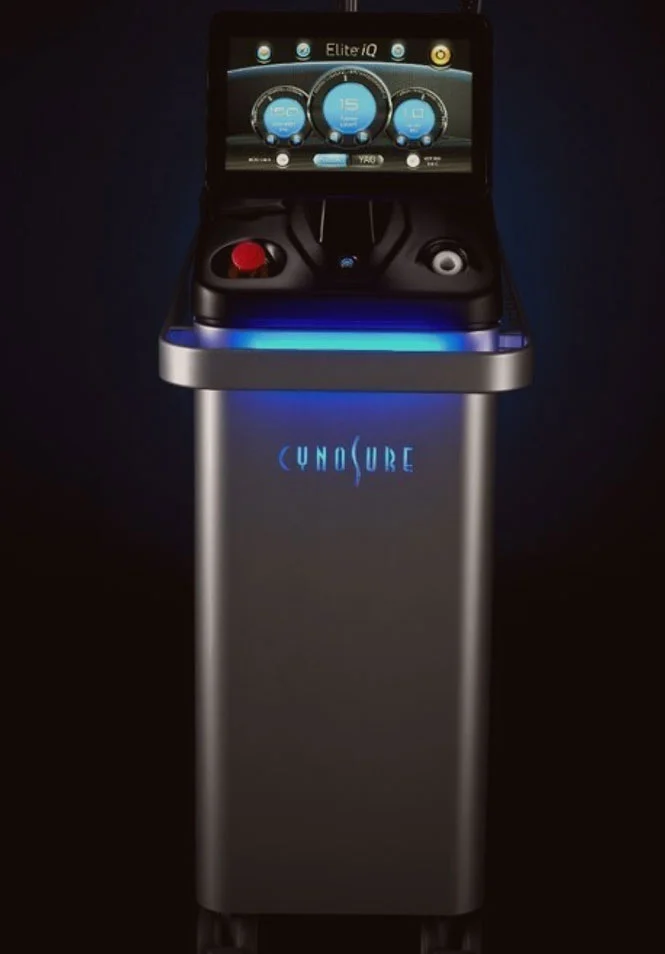

Expert Care for All Skin Tones
Today, laser hair removal services can be applied to nearly all skin and hair types. However, individuals with darker skin tones should be especially careful when choosing a specialist. Ensuring safety is crucial, as well as confirming that the clinic has a laser suitable for specific needs.
Cambridge Laser Lab has extensive experience performing laser hair removal treatments on skin types 1–4. Type 4 includes Asian, Latino, and Middle Eastern skin types. For treating skin types 5 and 6, the Nd:Yag laser is recommended as it is safer for high melanin levels.
Another important factor for hair laser removal treatments is hair color. The best results are observed in individuals with a strong contrast (light skin and dark hair). Those with very light blonde, red, gray, or white hair are not suitable candidates for laser hair removal, as their follicles do not contain enough melanin for effective treatment.
Why Choose Us
Our laser hair removal treatments stand out for their safety, speed, high efficacy, and minimal discomfort. Best of all, they are suitable for any skin type and provide long-lasting hair reduction.
This means you’ll no longer need to shave, deal with ingrown hairs, or spend on regular waxing sessions. Instead, enjoy the exceptional results of soft, smooth skin without the hassle.

Our Salon’s Advantages
- Qualified and Experienced Specialists
Our studios employ professionals who are highly skilled in using medical-grade laser for hair removal, having completed training and certification to work with the equipment.
- Affordable Prices
Whether you’re interested in a one-time treatment for a specific area or packages, check out our laser hair removal specials for men and women.
- Personalized Approach
Our company understands that every client has unique needs. We offer tailored solutions that best meet your requirements and expectations.
- Cutting-Edge Laser Technology
We permanently update our equipment, focusing on innovations in laser hair treatment to guarantee the highest service quality.
Blogs
Facial grooming and skincare have become essential aspects of modern men’s daily routines. Among these concerns, the persistent issue of
Are you tired of the constant battle with shaving? If so, you’re not alone. Shaving can be a tiresome and
Reviews
Posted on
Indications for the Procedure
Laser hair removal is suitable for everyone who does not have contraindications to the procedure. If you are tired of enduring pain during hair removal, regularly spend money on razors, wax or sugar, fight ingrown hairs and irritation, laser hair removal is what you need. No pain and for a long time!
- Patients under 18 – should be accompanied by a parent or legal guardian during the visit.
- During pregnancy, lactation, hormonal contraception.
- In the presence of burns, abrasions, keloid scars.
- With exacerbated allergies, malignant neoplasms, with skin diseases, acute viral infections.
- With uncompensated stage of diabetes, severe forms of hypertension, varicose veins.
Frequently Asked Questions
Treatment Process
Laser hair removal is a beauty treatment that uses a special machine with lasers to send heat into the skin. This targets and disables hair follicles, helping to reduce hair growth.
Many people find this treatment life-changing because it can provide a long-term solution for getting rid of unwanted hair on the body and face. However, it's important to think about a few things before you start laser hair removal.
First, you’ll need a consultation and a patch test. This is where a professional checks your hair type to make sure it's suitable for the treatment. If you have any health issues or hormonal problems, it's important to discuss those too, as they can affect how well the treatment works.
Also, remember that different machines work differently. Our clinic uses FDA-approved, high-quality medical lasers that have been proven to effectively remove hair. This gives our clients better results and ensures safety during the procedure.
Your consultation is a crucial step in the laser hair removal process. During this meeting, we will review your medical history, examine your skin and hair, and make sure you are a good fit for the treatment. We will also answer any questions you might have about the procedure.
Our goal is to provide you with all the information you need to feel confident that laser hair removal is the right choice for you. After your consultation, you should have a clear understanding of how the laser works and the science behind it.
The patch test is equally important. It helps us check your skin for any sensitivity to the laser and ensures that you're a suitable candidate for the treatment.
We believe that if you're trusting us with your laser hair removal journey, we should take the time to explain everything thoroughly and ensure all of your questions are fully answered.
We totally get it—if you’ve never tried laser hair removal before, it can seem a bit intimidating, but there’s no need to worry. During your first patch test, we’ll explain how the treatment works, and you’ll get a feel for it. If you’re feeling any discomfort, we can adjust the settings to make it more comfortable for you.
In the beginning, our goal is to slow down hair growth and thin it out. We do this by using a lower level of heat on your skin. Your initial sessions should be pretty comfortable, and you might feel a slight to medium pinch, depending on how thick your hair is.
We’ll take the time to explain everything that will happen so you feel relaxed. Our therapists are very professional and will ensure you’re comfortable throughout the process.
If you’re considering laser hair removal and usually wax or use an epilator, it’s best to stop these methods 4-6 weeks before your first session. This allows your hair follicles to be full and ready for treatment.
Make sure the area to be treated is free from any tan—whether real or artificial—and gently exfoliate about 5 days before your session.
Avoid applying any moisturizers, creams, oils, or lotions to the treatment area. The only exception is Aloe Vera, which is fine if your skin is irritated from shaving.
Be sure to shave the area the night before your appointment, not on the same day. Shaving can slightly exfoliate and irritate your skin, so giving it some time to recover overnight will make the treatment more comfortable. Shaving on the day of your treatment can make your skin feel more sensitive and may limit the energy we can use because of that sensitivity.
The number of sessions needed varies from person to person. Here’s a general guideline for someone with pale skin and dark, dense hair, who doesn’t have any medical issues and follows the recommended schedule for sessions and touch-ups:
- Face: 6-12 sessions (This area is more challenging to treat because the hair is finer and there are more follicles.)
- Bikini and Underarms: 6-10 sessions (The labia can be particularly difficult due to darker skin.)
- Large Areas (like legs and arms): 6-10 sessions (Areas like the knees and upper thighs might require more sessions because of thick skin or finer hairs.)
- Men's Back/Chest: 12-15 sessions (This area often has strong, coarse hair that is tougher to treat with laser.)
Once you finish these initial sessions, you will need maintenance sessions. Most people typically require about 2-3 maintenance sessions each year.
Lasers are highly selective and effectively target melanin, which means you’ll need fewer treatments for long-term hair removal.
There is a growing body of clinical evidence that supports the effectiveness of laser treatments.
Lasers can penetrate deeper into the skin to specifically reach hair structures. For example, the Alex 755nm, NdYAG 1064nm, and Diode 810nm lasers penetrate about 4-5mm deep, specifically designed for targeting hair, while most Intense Pulsed Light (IPL) devices only reach about 2mm, which isn’t deep enough for effective targeting.
Additionally, lasers feature advanced cooling systems that make the treatments more comfortable.
The time between sessions varies from person to person, but generally, it's recommended to have a 4-6 week gap initially, depending on the area being treated.
For the face, we suggest scheduling sessions every 4 weeks for at least the first 6 treatments. This may change based on how quickly your hair regrows. After that, we might extend the intervals to 6-8 weeks or longer if needed.
For body areas, a 6-week interval is typically recommended, depending on hair density and regrowth patterns. Eventually, these gaps can be extended to 8-10 weeks. Throughout your treatment, your therapist will continuously assess your progress and suggest when you should come back for your next session.
While the reduction in hair is permanent, achieving 100% removal of every single follicle in a specific area is not possible. Throughout your treatment, you'll notice a significant change in your hair—what starts as rough, coarse, and thick will eventually become soft, thin, and light. Some areas may have completely lost hair, while others may still have sporadic light hairs remaining.
To address these finer hairs, top-up laser hair removal treatments are recommended. These are typically needed once or twice a year to maintain the results.
Tanning, sun exposure and fake tan
No, tanning is not recommended during laser hair removal treatments. Tanning can significantly impact the number of sessions required and the overall effectiveness of your results. This is particularly important at the beginning of your treatment, as it’s essential to complete at least 6-8 sessions with a 6-8 week gap in between.
When you tan, the melanin in your skin cells is stimulated, which means that if you tan, you'll need to wait at least 8-10 weeks before performing a patch test or continuing with your sessions. This extended gap can lead to increased hair density and growth, as you're missing some hair growth cycles. As a result, you may notice hair growth occurring simultaneously, which is normal and may require additional sessions to achieve the desired results.
No, using sunbeds is extremely dangerous during laser hair removal treatments and must be avoided at all times. Exposure to the intense UV rays from sunbeds can seriously damage your skin, increase the risk of burns, and negatively affect the effectiveness of the laser treatment. It's essential to prioritize skin safety and maintain the integrity of your treatments by steering clear of sunbeds throughout the course of your laser hair removal.
Yes, you can apply fake tan approximately 4-5 days after your session and continue to use it between treatments. However, it's crucial to avoid using any self-tanner for at least a week prior to your treatment. Additionally, make sure to exfoliate your skin daily to remove any residue from the fake tan. If there is any leftover product on your skin, the treatment cannot be performed until it is completely removed. This ensures the laser can effectively target the hair follicles without interference.
Shaving & waxing during treatment
No, waxing is not recommended during your laser hair removal treatment. Shaving is the only method of hair removal advised while undergoing treatment at our clinics. Waxing can disrupt hair growth patterns and negatively impact the effectiveness of the laser treatment, potentially affecting your results. It's essential to stick to shaving to ensure the best outcomes from your laser hair removal sessions.
Absolutely, you can shave as much as you like while undergoing laser treatment. In fact, it's recommended to shave the treatment area the night before your session rather than on the day of treatment. Shaving can slightly exfoliate and irritate the skin, so allowing overnight for the skin to regenerate can make the treatment more comfortable. Shaving on the day of your treatment may lead to increased sensitivity, which could limit the amount of energy that can be safely used during the laser hair removal session.
After your laser hair removal treatment, you may notice that the hair still appears to be “growing” and can look darker and thicker in certain areas, like the bikini line. This is a normal part of the laser hair removal process as the hair enters a shedding stage. The dark and thick appearance is a result of the hair being charred by the laser, which is a positive sign.
Typically, it can take 10 to 21 days for the hair to fall out of the follicles, leaving your skin noticeably smoother. During this period, it's perfectly fine to shave the treated areas.
You can start lightly exfoliating about 3-4 days after your laser hair removal treatment, depending on how sensitive your skin feels. It's important to be gentle during the first week. Regular exfoliation between appointments is highly recommended, as it helps prevent ingrown hairs from forming under the skin, promoting smoother results and overall skin health.
Yes, you can wax after your laser hair removal treatments. However, it is advisable to continue with laser treatments on the area until you achieve the level of hair reduction you are satisfied with, provided that the remaining hairs still contain pigment. The laser will primarily target and treat the darker hairs, leaving lighter hairs unaffected, which is fine to wax.
If you are in the middle of a course of laser hair removal, it is important to avoid waxing the area between sessions, as this can interfere with the effectiveness of your treatment and affect your overall results.
Ingrown Hairs
Ingrown hairs can occur, especially if you've transitioned from waxing to shaving, as your skin needs some time to adjust. They may also happen when treated hairs are shedding, particularly if you aren't exfoliating regularly. If you are prone to ingrown hairs, you might notice bumps appearing about a week after a laser hair removal session; these are usually not a cause for concern.
To manage ingrown hairs, it's essential to use a product specifically designed to help with them and to begin exfoliating regularly at this stage. If you notice ingrown hairs, make sure to stop using these products about a week before your next session and then resume their use about a week after your treatment. Gentle exfoliation methods are effective in freeing any trapped hairs, and it's important to hydrate your skin afterward to keep it healthy and prevent further issues.
As for the red marks left by ingrown hairs, they typically fade over time, especially with consistent exfoliation and proper skincare. Using products that promote skin healing and hydration can also aid in reducing the appearance of these marks. Regularly moisturizing the area and protecting it from sun exposure will further support the fading process.
Achieving optimal results
Laser hair removal can work on light hairs that have some dark pigment. However, it is generally not effective on blond, red, grey, or white hairs, as these colors lack sufficient pigment for the laser to effectively target and absorb.
For most individuals, laser hair removal is a highly effective and often transformative treatment. However, since everyone is genetically different, various factors can significantly influence the effectiveness of your results. Here are some key factors that will determine the outcome and the number of sessions required:
- Skin Color: The tone of your skin can affect how well the laser targets the hair.
- Hair Color and Diameter: The color and thickness of your hair play a crucial role in the treatment's effectiveness.
- Optimum Fluences (Energy Levels): The energy levels used during the treatment can impact results.
- Optimum Treatment Intervals: The time between each session is essential for achieving the best outcomes.
- Underlying Conditions: Any existing skin or health issues can also influence the effectiveness of the treatment.
All of these factors will be thoroughly discussed during your consultation with our laser specialists.
Following laser hair removal, your skin will be sensitive, so it's important to avoid the following:
- Hot Showers/Baths: Stay away from hot showers, baths, steam rooms, saunas, swimming pools, and intense exercise for 24-48 hours.
- Exfoliation: Avoid exfoliating for 3-4 days and opt for gentle exfoliation methods if necessary.
- Sun Exposure: Refrain from using sunbeds and protect the treated area from direct sunlight during the course of your treatment.
- Perfumed Products: Avoid using perfumed products or thick creams for 48 hours after your session.
- Tight Clothing: Don't wear tight clothing, such as skinny jeans or nylon tights (if your legs are treated), for 48 hours to prevent heat build-up and friction that could irritate the skin.
Following these guidelines is essential to prevent irritation in the treated area and ensure your skin remains safe and healthy.
Yes, after completing a typical series of sessions (usually 6-8), you may require touch-up or maintenance sessions a few times a year, depending on individual factors and the initial hair growth pattern. Any remaining hairs should be sparse, fine, and light, with slow growth.
Comfort during the treatment.
During your initial patch test, we apply the laser to the most sensitive area, allowing you to gauge what to expect. We adjust the settings based on your sensitivity and comfort level. Pain perception varies from person to person and depends on the treatment area, but we prioritize your comfort throughout the process.
The lasers we use are equipped with cooling devices to minimize any discomfort during treatment. Most individuals find that the anticipation is the most challenging part; the actual procedure is typically manageable. Initially, the first few pulses might
No, you do not need to cancel your session. If you are having your bikini area treated, we recommend using a tampon. While you may experience increased sensitivity during your period, it is completely normal and not a problem to proceed with the treatment. Many individuals continue their sessions while on their period.
It's best to avoid any strenuous exercise for at least 24 hours after your laser hair removal treatment. The laser uses heat to target hair follicles beneath the skin, and exercising can raise your body temperature and cause sweating, which may lead to increased irritation in the treated area. This caution also applies to swimming, as chlorine in the water can further irritate the skin during the first 24 hours post-treatment.
Yes, after completing a typical series of sessions (usually 6-8), you may require touch-up or maintenance sessions a few times a year, depending on individual factors and the initial hair growth pattern. Any remaining hairs should be sparse, fine, and light, with slow growth.
Locations
-
Hours of Operation
- Monday
- 9:00 AM - 8:00 PM
- Tuesday
- 9:00 AM - 7:00 PM
- Wednesday
- 9:00 AM - 7:00 PM
- Thursday
- 9:00 AM - 8:00 PM
- Friday
- 9:00 AM - 7:00 PM
- Saturday & Sunday
- 10:00 AM - 3:00 PM
-
Hours of Operation
- Monday
- 9:30 AM - 2:00 PM
- Tuesday
- Closed
- Wednesday
- Closed
- Thursday
- 3:00 PM - 7:00 PM
- Friday
- 3:00 PM - 7:00 PM
- Saturday
- 10:00 AM - 4:00 PM
- Sunday
- Closed
© Copyright 2025 Cambridge Laser Inc.
All Rights Reserved.

